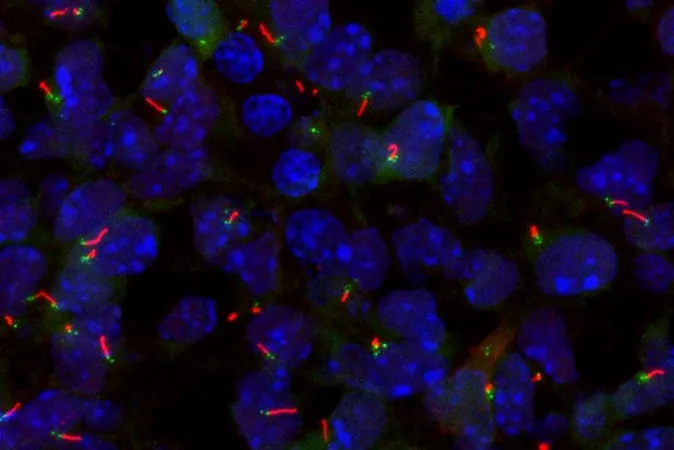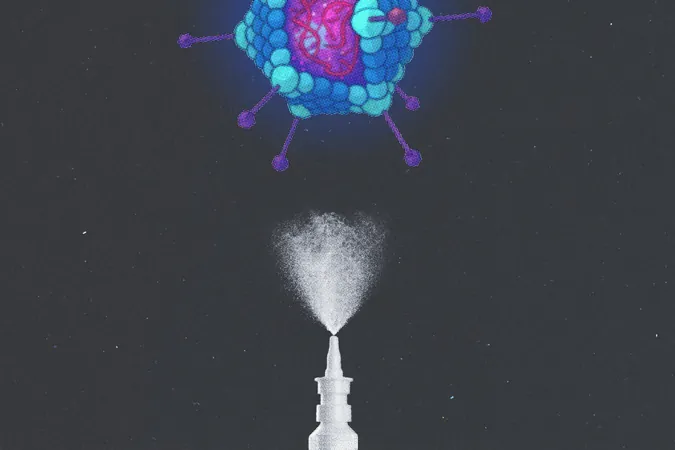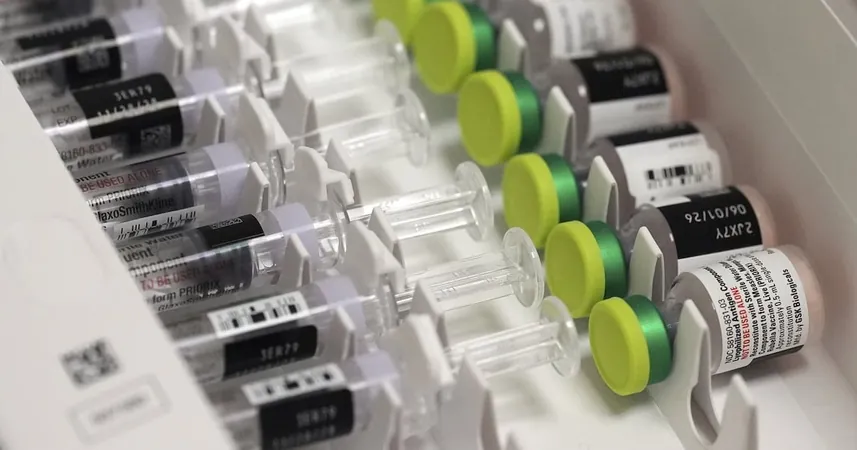
Unlocking the Secrets of Primary Cilia: Scientists Discover Key Genetic Switches!
2025-09-14
Author: Liam
Meet the Unsung Hero: The Primary Cilium
What if we told you that a tiny structure, barely acknowledged for decades, could hold the key to understanding serious health issues? Enter the primary cilium, often referred to as an antenna or a finger-like projection, that extends from the surface of nearly every human cell. This seemingly small organelle is making a big splash, thanks to groundbreaking research from Memorial Sloan Kettering Cancer Center.
Why Do These Tiny Projections Matter?
Primary cilia are not just whimsical decorations on cells; they play a crucial role in sensing the environment and guiding embryonic development. Without proper formation of these structures, we could face dire consequences ranging from hearing loss to complex organ defects. But one lingering question has perplexed researchers: what initiates the formation of primary cilia?
The Discovery of Genetic Switches
A cutting-edge study in the journal *Science* sheds light on this mystery! Developmental biologists Dr. Yinwen Liang and Dr. Alexandra Joyner have identified two genes, SP5 and SP8, that function as vital switches controlling the formation of primary cilia. Their findings could revolutionize our approach to treating a cluster of genetic disorders called ciliopathies.
Breaking Down the Science of Cilia
Cilia are slender, hair-like structures that come in two types: motile cilia that move fluids (like in the lungs) and primary cilia that act like sensory antennas. When these tiny structures malfunction, they can lead to a range of rare genetic disorders affecting 1 in 2,000 individuals globally.
How Did They Make This Groundbreaking Find?
Dr. Liang, initially thinking that cells lacking cilia were breaking them down, shifted her focus to the possibility that specific genes give the green light for cilia construction. Using advanced tools like single-cell RNA sequencing, the researchers unraveled a treasure trove of over 100 genes active in ciliated cells. Ultimately, SP5 and SP8 emerged as the shining stars of this genetic drama!
Just One Gene Can Make The Difference!
Taking their research further, they discovered an extraordinary truth: when SP8 was introduced into non-ciliated cells, these cells suddenly sprung to life, producing their own cilia. "This has never been seen before," exclaimed Dr. Joyner, illustrating the groundbreaking potential of SP5 and SP8 in cellular decision-making.
Implications for Human Health!
This revelation is not just a lab phenomenon; it offers hope to thousands afflicted by ciliopathies, complex disorders that cause a range of symptoms from organ misplacement to cognitive challenges. With opportunities for gene therapy on the horizon, pinpointing malfunctions in SP5 or SP8 could pave the way for effective treatments.
Evolving Science and Future Prospects
Excitingly, the implications extend beyond just understanding diseases. This research could enhance the practices surrounding stem cell cultivation, ensuring that lab-grown tissues function optimally by ensuring proper cilia formation.
A New Perspective on Cell Biology!
The discovery of SP5 and SP8 marks a pivotal moment in cell biology. These genes not only regulate primary cilia but also influence more complex cellular structures. The findings reveal a sprawling genetic network that dictates not just whether cilia are built, but which kind—highlighting a larger narrative in cellular function and development.
Conclusion: From Overlooked to Essential!
This remarkable journey, from the obscurity of primary cilia to a focal point in genetic research, serves as a reminder that even the smallest components can yield the most significant insights. Science continues to evolve, revealing layers of complexity and potential that could change lives and enhance our understanding of human biology.









 Brasil (PT)
Brasil (PT)
 Canada (EN)
Canada (EN)
 Chile (ES)
Chile (ES)
 Česko (CS)
Česko (CS)
 대한민국 (KO)
대한민국 (KO)
 España (ES)
España (ES)
 France (FR)
France (FR)
 Hong Kong (EN)
Hong Kong (EN)
 Italia (IT)
Italia (IT)
 日本 (JA)
日本 (JA)
 Magyarország (HU)
Magyarország (HU)
 Norge (NO)
Norge (NO)
 Polska (PL)
Polska (PL)
 Schweiz (DE)
Schweiz (DE)
 Singapore (EN)
Singapore (EN)
 Sverige (SV)
Sverige (SV)
 Suomi (FI)
Suomi (FI)
 Türkiye (TR)
Türkiye (TR)
 الإمارات العربية المتحدة (AR)
الإمارات العربية المتحدة (AR)